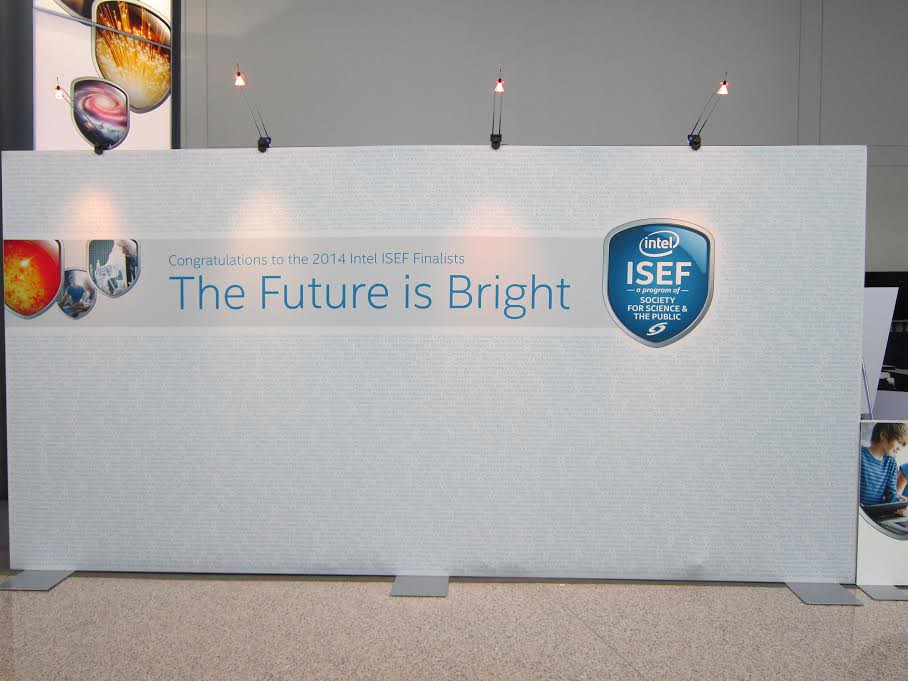
With awards totaling $1,612,500 and the motto “Tomorrow begins today,” the annual Intel Science Talent Search (STS) fuels the next generation of scientists. Held this year during the first week of March in Washington D.C., STS is the oldest and most esteemed high school science and math competition on the planet.
This is not the typical science fair. STS gathers 40 of the top young scientists in the country who tackled society’s most pressing problems by conducting their own graduate-level research, all while still in high school. Past alumni of the competition have gone on to become Nobel laureates, MacArthur fellows and Field Medal winners.
Dating back to 1942, STS was the Westinghouse Science Talent Search, or “the Westinghouse,” for most of its existence. As of 1998, Intel Corporation is now the STS sponsor alongside Society for Science and the Public (SSP), a nonprofit whose vision is “to promote the understanding and appreciation of science and the vital role it plays in human advancement: to inform, educate and inspire.”
SSP also sponsors STS’s middle school counterpart, Broadcom Masters, and sister competition, the Intel International Science and Engineering Fair (ISEF), which is the world’s premier and largest pre-collegiate science competition.
This year, the STS total award amount tripled, with the top projects in the categories Innovation, Global Good and Basic Research awarded $150,000. Second place winners in each category received $75,000, third place received $35,000, and every one of the 40 finalists received at least $7,500.
Monetary awards were not the only honors presented during the weeklong event in the nation’s capital. Finalists were also granted a meet-and-greet with President Obama.
The president met each of the student researchers individually on March 7. He shook their hands, asked for their names and their hometowns, and spoke about the advancement of science, technology, engineering and math (STEM) education.
In a press release from SSP, Intel Corporation President Renee James echoed President Obama’s emphasis on STEM education with the quote, “A solid foundation in science, technology, engineering and math creates the critical talent corporations and startups need to drive their business and contribute to economic development.”
“We hope this program will encourage other young people to become the next generation of scientists, inventors and engineers,” James continued.
The 2015 top award in Innovation went to 18-year-old Michael Winer for his project titled “Interaction of Electrons and Phonons in a Crystal,” research that can be used in more complex atomic structures including superconductors.
Second and third place winners were Saranesh Prembabu with “Coupled Electric and Magnetic Properties in Artificially-Layered Perovskite Thin Films” and Catherine Li from Orlando with “In-Fiber Emulsification of Biodegradable Polymers for Drug Delivery.” Prembabu’s research can be implemented in electrical and computing applications and Li’s research may be applied in cancer therapy. The Innovation category distinguished creative projects with high problem-solving design.
In the Global Good category – which distinguishes passionate projects that kept making a difference in mind – first place went to 17-year-old Andrew Jin for his project titled “Shedding Light on Human Evolution: Machine Learning Algorithms for Systematic Genome-wide Discovery and Characterization of Adaptive Mutations.” Jin identified mutations relating to immune response, metabolism, brain development and schizophrenia in the human genome.
Kalia Firester won second place in Global Good with “The Role of Fatty Acid and Retinol Binding Proteins (FARs) During Host Parasitism by RKN Meloidogyne spp,” research that addressed the repelling of pests that cost agriculture around the world. Anvita Gupta with “Computational Drug Discovery for Cancer, Tuberculosis, and Ebola by Targeting Intrinsically Disordered Proteins” won third place by identifying potential drugs for cancer, tuberculosis and Ebola.
First place in the category of thorough and in-depth analysis driven projects – titled Basic Research – was awarded to 17-year-old Noah Golowich for his project “Resolving a Conjecture on Degree of Regularity, with some Novel Structural Results.” He developed a mathematical proof in an area that finds structure types in large complicated systems.
The second place award went to a project called “Monomization of Power Ideals and Generalized Parking Functions” by Brice Huang, who calculated the largest class of ideals for the power ideal’s series of dimension. Shashwat Kishore and “Multiplicity Space Signatures and Applications in Tensor Products of sl2 Representations,” which focused on abstract algebra, won third place.
“We are honored to congratulate Noah, Andrew, Michael and the rest of the top winners of the Intel Science Talent Search 2015,” President and CEO of SSP Maya Ajmera said in a press release. “These students serve as shining examples of the incredible work being accomplished in STEM fields by young people, and we are proud to recognize and reward these stellar young researchers.”
Information from this article was taken from https://societyforscience.org.
